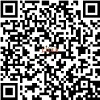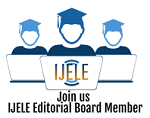*corresponding author
AbstractExpensive technological hardware and software, prohibitively high cost of installing e-learning systems, the dedication required in terms of time and skills development, and experts required to service e-learning resources systems are some challenges developing countries face in using e-resources for teaching and learning. In the context of these challenges, this study was conducted at a library of a secondary teachers’ college Y in Zimbabwe to gain insight into the nature of E-Resources Integration. Qualitative research methods involving interviews, observations, and document analysis were used to generate data. Interviewees who volunteered were pre-services teachers, teacher educators, Librarians, and ICT personnel managing the e-resources system. Through thematic analysis, data were presented as verbatim, and narratives were interpreted to unpack meaning imbued. Findings show that power outages, poor internet connectivity, lack of e-resources awareness by prospective users, competencies in using e-resources, and computers, were factors that inhibited effective e-resources use for teaching and learning. As a recommendation, libraries should design and provide e-learning resource services that motivate learners consistent with their information needs, increasing the probability of using such resources.
KeywordsE-resources; Library resources; Teacher education
|
DOIhttps://doi.org/10.31763/ijele.v3i2.121 |
Article metrics10.31763/ijele.v3i2.121 Abstract views : 2441 | PDF views : 864 |
Cite |
Full Text Download Download
|
References
[1] M. Okorie, “The Advent of Information and Communication Technology and its Impact on Political Activities in Ghana and Nigeria,â€ ê¸€ë¡œë²Œì •ì¹˜ì—°êµ¬, vol. 8, no. 2, pp. 143–162, 2015, available at: Google Scholar.
[2] S. Min and Y. Yi, “Eâ€resources, services and user surveys in Tsinghua University Library,†Program, 2010, doi: 10.1108/00330331011083211.
[3] A. Y. Kenchakkanavar, “Types of e-resources and its utilities in library,†Int. J. Inf. sources Serv., vol. 1, no. 2, pp. 97–104, 2014, available at: Google Scholar.
[4] E. Ankrah and D. Atuase, “The use of electronic resources by postgraduate students of the University of Cape Coast,†2018, available at: Google Scholar.
[5] S. R. Sharifabadi, “How digital libraries can support eâ€learning,†Electron. Libr., 2006, doi: 10.1108/02640470610671231.
[6] K. M. Drabenstott, “Analytical Review of the Library of the Future.,†1994, available at: Google Scholar.
[7] U. Nwokocha, “Influence of electronic information resources utilization on academic performance of HND students in Federal Polytechnic, Nekede, Owerri,†Libr. Philos. Pract., pp. 1–16, 2018, available at: Google Scholar.
[8] S. Thanuskodi, “Use of E-resources by the Students and Researchers of Faculty of Arts, Annamalai University,†Int. J. Libr. Sci., vol. 1, no. 1, pp. 1–7, 2012, doi: 10.5923/j.library.20120101.01.
[9] C. Sharma, “Use and impact of e-resources at Guru Gobind Singh Indraprastha University (India): A case study,†2009, available at: Google Scholar.
[10] H. Yakubu and O. O. Olatoye, “Use of Electronic Resources in Teaching and Learning at Federal University, Dutsin-Ma, Nigeria,†Mediterr. J. Soc. Sci., vol. 6, no. 1, p. 584, 2015, doi: 10.5901/mjss.2015.v6n1p584.
[11] T. Çakmak, “Cataloguing practices at university libraries: Analysis of current conditions and practices in Turkey,†Electron. Libr., 2019, doi: 10.1108/EL-06-2018-0122.
[12] T. Anderson, The theory and practice of online learning. Athabasca University Press, 2008, available at: Google Scholar.
[13] H. Gunn, “Virtual libraries supporting student learning,†Sch. Libr. Worldw., vol. 8, no. 2, p. 27, 2002, available at: Google Scholar.
[14] S. ur Rehman and V. Ramzy, “Awareness and use of electronic information resources at the health sciences center of Kuwait University,†Libr. Rev., 2004, doi: 10.1108/00242530410526556.
[15] I. Bature, “Utilization of library resources by students of tertiary institutions in Kebbi state of Nigeria,†Int. J. Res. Educ., vol. 6, no. 1/2, 2009, available at: Google Scholar.
[16] W. P. Mtega and R. Benard, “The Integration of library and e-learning systems: the case of selected public universities in Tanzania,†2014, available at: Google Scholar.
[17] D. Rosenberg, “Towards the digital library in Africa,†Electron. Libr., 2006, doi: 10.1108/02640470610671150.
[18] R. M. Harden, J. Crosby, M. H. Davis, P. W. Howie, and A. D. Struthers, “Task-based learning: The answer to integration and problem-based learning in the clinical years,†Med. Educ., 2000, doi: 10.1046/j.1365-2923.2000.00698.x.
[19] L. Dublin, “If you only look under the street lamps... or nine e-learning myths,†e-Learning Dev. J., pp. 1–7, 2003, available at: Google Scholar.
[20] P. S. Dadzie, “Information literacy: assessing the readiness of Ghanaian universities,†Inf. Dev., vol. 23, no. 4, pp. 266–277, 2007, doi: 10.1177/0266666907084762.
[21] C. D. Isiakpona and G. Ifijeh, “Availability of Electronic Resources for Service Provision in University Libraries in Ogun State Nigeria,†Samaru J. Inf. Stud., vol. 12, no. 1–2, pp. 7–14, 2012, available at: Google Scholar.
[22] P. G. Rossi, “Learning environment with artificial intelligence elements,†J. e-learning Knowl. Soc., vol. 5, no. 1, pp. 67–75, 2009, available at: Google Scholar.
[23] C. Okelloâ€Obura, “Assessment of the problems LIS postgraduate students face in accessing eâ€resources in Makerere University, Uganda,†Collect. Build., 2010, doi: 10.1108/01604951011060385.
[24] Z. Ercegovac, “What engineering sophomores know and would like to know about engineering information sources and access,†Issues Sci. Technol. Librariansh., vol. 57, no. 1, 2009, available at: Google Scholar.
[25] P. A. Manda, “Electronic resource usage in academic and research institutions in Tanzania,†Inf. Dev., vol. 21, no. 4, pp. 269–282, 2005, doi: 10.1177/0266666905060070.
[26] C. Okello-Obura, “Assessment of the problems postgraduate students face in accessing e-resources at Makerere University, Uganda: a comparison between education and LIS students,†Mousaion, vol. 29, no. 2, pp. 41–60, 2011, doi: 10.1108/01604951011060385.
[27] O. C. Fatoki, “Library automation inNigeria: the Kenneth Dike library experience,†2004, available at: Google Scholar.
[28] S. Bhatt and M. S. Rana, “Eâ€information usage among engineering academics in India with special reference to Rajasthan State,†Libr. hi tech, 2011, doi: 10.1108/07378831111174440,
[29] M. Madhusudhan, “Use of electronic resources by research scholars of Kurukshetra University,†Electron. Libr., 2010, doi: 10.1108/02640471011033684.
[30] S. Tyagi, “Use and awareness of electronic information sources at IIT Roorkee, India: A case study,†Use Aware. Electron. Inf. Sources IIT Roorkee, India A Case Study, pp. 1–22, 2011, available at: Google Scholar.
[31] D. Ferreira, G. MacLean, and G. E. Center, “Andragogy in the 21st century: Applying the assumptions of adult learning online,†Lang. Res. Bull., vol. 32, no. 1, 2018, available at: Google Scholar.
[32] E. M. Rogers, Diffusion of innovations. Simon and Schuster, 2010, available at: Google Scholar.
Refbacks
- There are currently no refbacks.
Copyright (c) 2021 Alois Matorevhu

This work is licensed under a Creative Commons Attribution-ShareAlike 4.0 International License.

International Journal of Education and Learning
ISSNÂ 2684-9240
Published by Association for Scientific Computing Electronics and Engineering (ASCEE)
W : http://pubs2.ascee.org/index.php/ijele
E : zalik@ascee.org

This work is licensed under a Creative Commons Attribution-ShareAlike 4.0 International License.





















